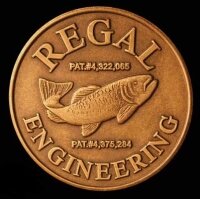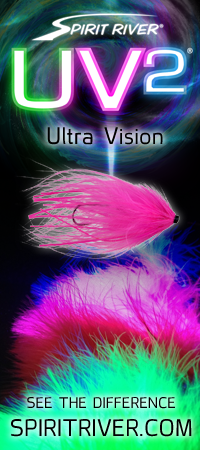I wanted to add a second part to Aaron’s post from yesterday to show off more of his flies. There are some beauties here! Aaron comments on each below.

Wulff Porcupine Bumble Hump

Slate Drake Variant
Here is my “Slate Drake Variant.” It is based on a fly tied by Ray Bergman. Most of my flies are heavily influenced by Ray.
Description: The UPF Slate-Drake Variant is my version of the Isonychia. It is a slight variant of the original. It can also imitate a “White-Gloved Howdy” in a pinch.
I use a quilled body for this fly, because I believe that a quill creates the illusion of segmentation better than a dubbed body. A thin layer of lacquer is applied so the body lasts longer. This is a very durable and productive fly!
If you own a split-cane rod, you know that there isn’t anything better than strategically placing a classic fly in front of a fish, and seeing that fish take it. This fly is tied in the classic Catskills style of flies, and is a perfect match for that little bamboo fly chucker.

Superior Loch Wet
This fly was created based on some of Davie McPhail’s patterns. In essence, this fly can be dead-drifted, swung, and even striped as a streamer. In slower moving water the soft-hackles move generously. And in faster moving water, the buck tail underwing give the fly much needed structure. I tied it this way, so it would collapse.

Blue Bird
Here is the “Blue Bird” Dry. I created this pattern as an attractor for fishing water with pressure. It is also a great searching pattern.

Green Lantern dry fly
Here is the photo for my “Green Lantern” dry fly. It can be used for the Sulfur hatch, or it is a great attractor fly. The body is made up of porcupine quill, which I have been using heavily for my dry fly bodies.

Jo Hex
Description: The creator of this fly is Josephine Sedlecky-Borsum. She was the owner of Ed’s Sport Shop in Baldwin, Michigan from 1945 to 1992. This pattern was discovered while rummaging through a collection of her flies supplied by David Stewart. David Roller, who used to work with ‘Jo’, confirmed that this was one of her early hex patterns most probably created in the early 1950’s. This early pattern was to be modified over the years into several of her other creations.
The pattern is timeless and is the original version; preserving the nostalgia of classic Michigan patterns. However, I tie this fly with premium modern materials, that allow the fly to last longer, and only use quality hooks. I adhere to the classic patterns, because that is what they are “Classic Michigan Flies” that are still extremely productive. You can not buy these patterns in fly shops, and most people have never heard of them because of the standardization that overseas’ fly manufactures have brought to the industry.
This pattern is a MUST for people who fish the Manistee, Pere Marquette, and branches of the Au Sable. If you fish “downstate,” this pattern is a must for fishing the “Giant Michigan Mayfly Hatch”.









